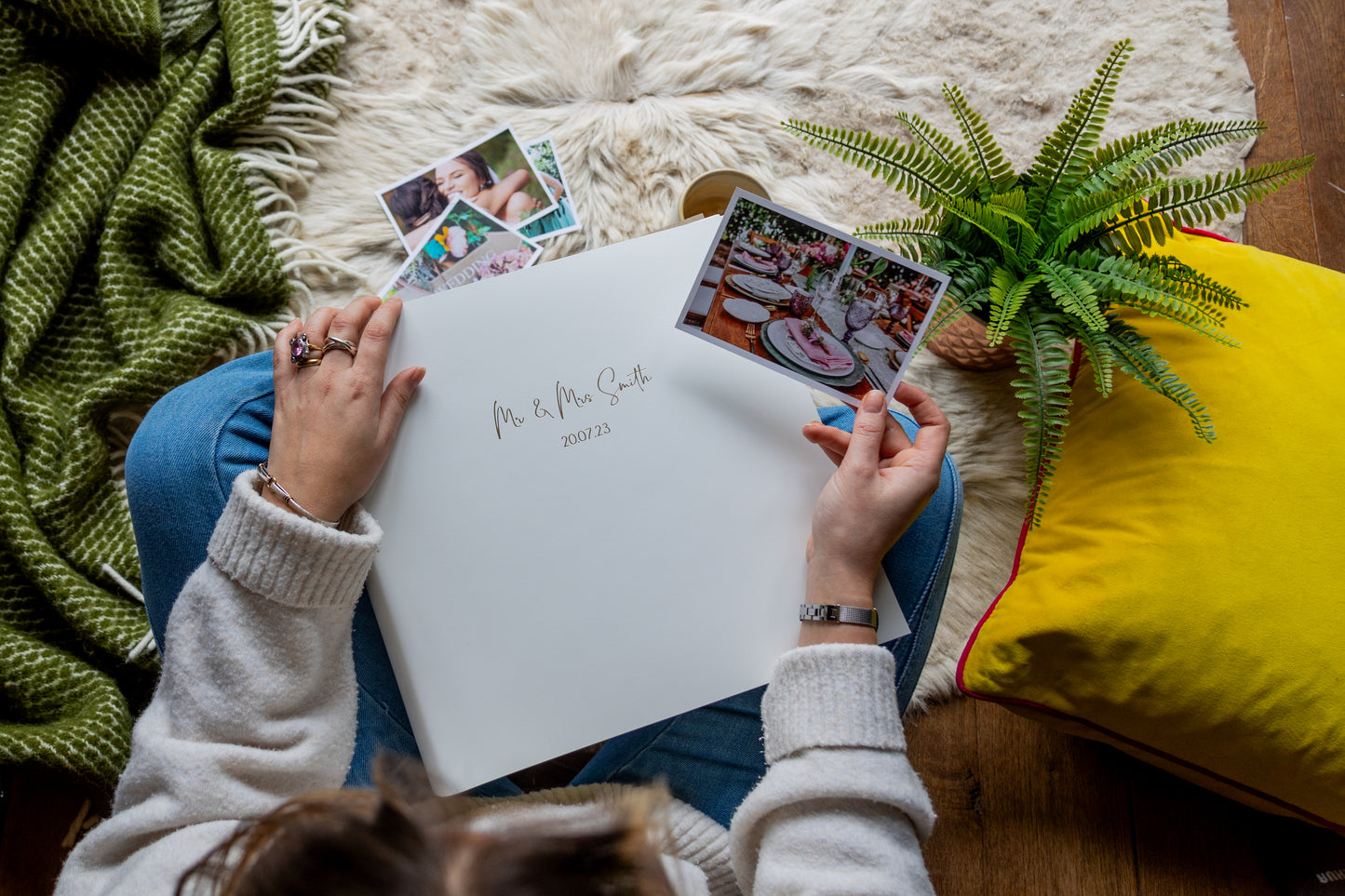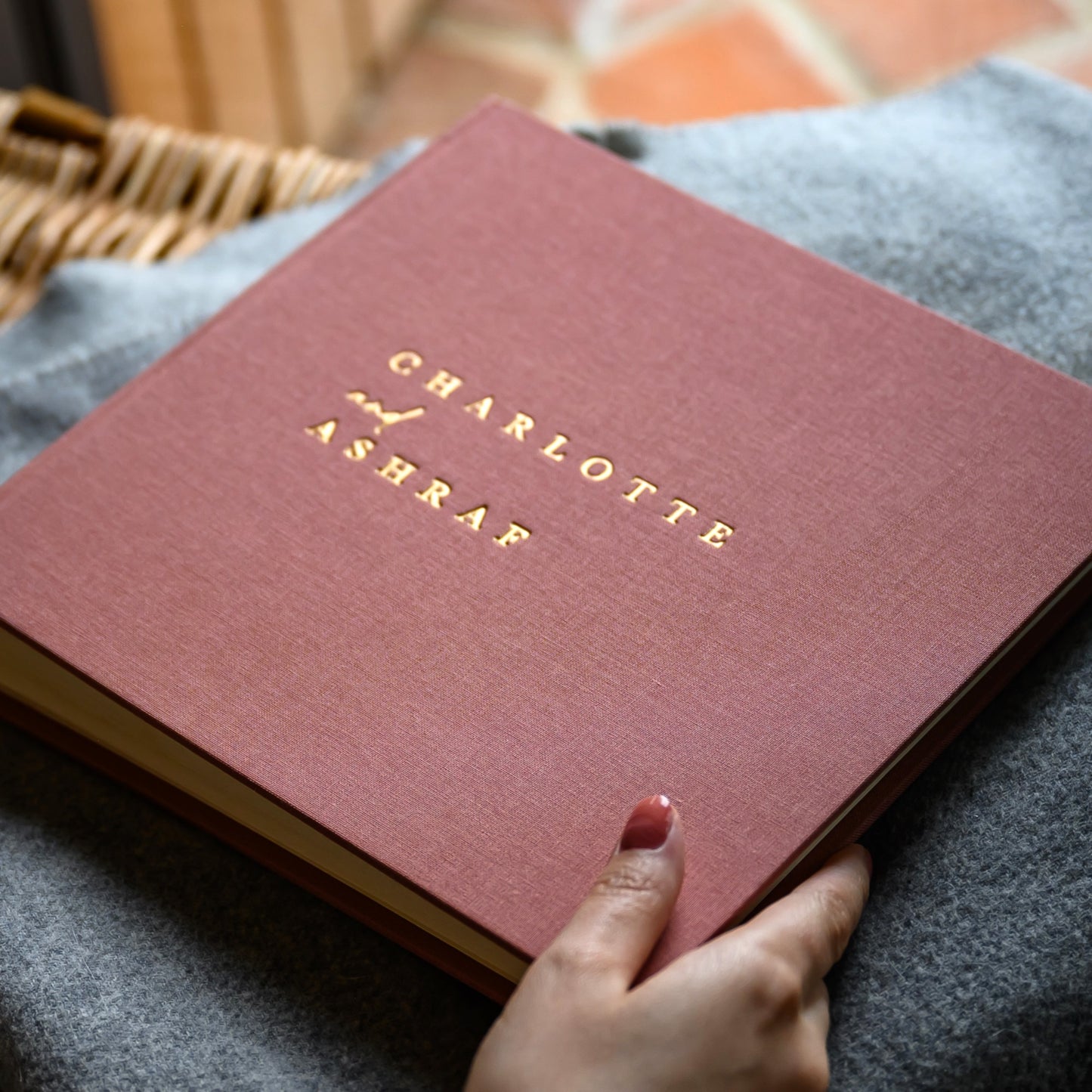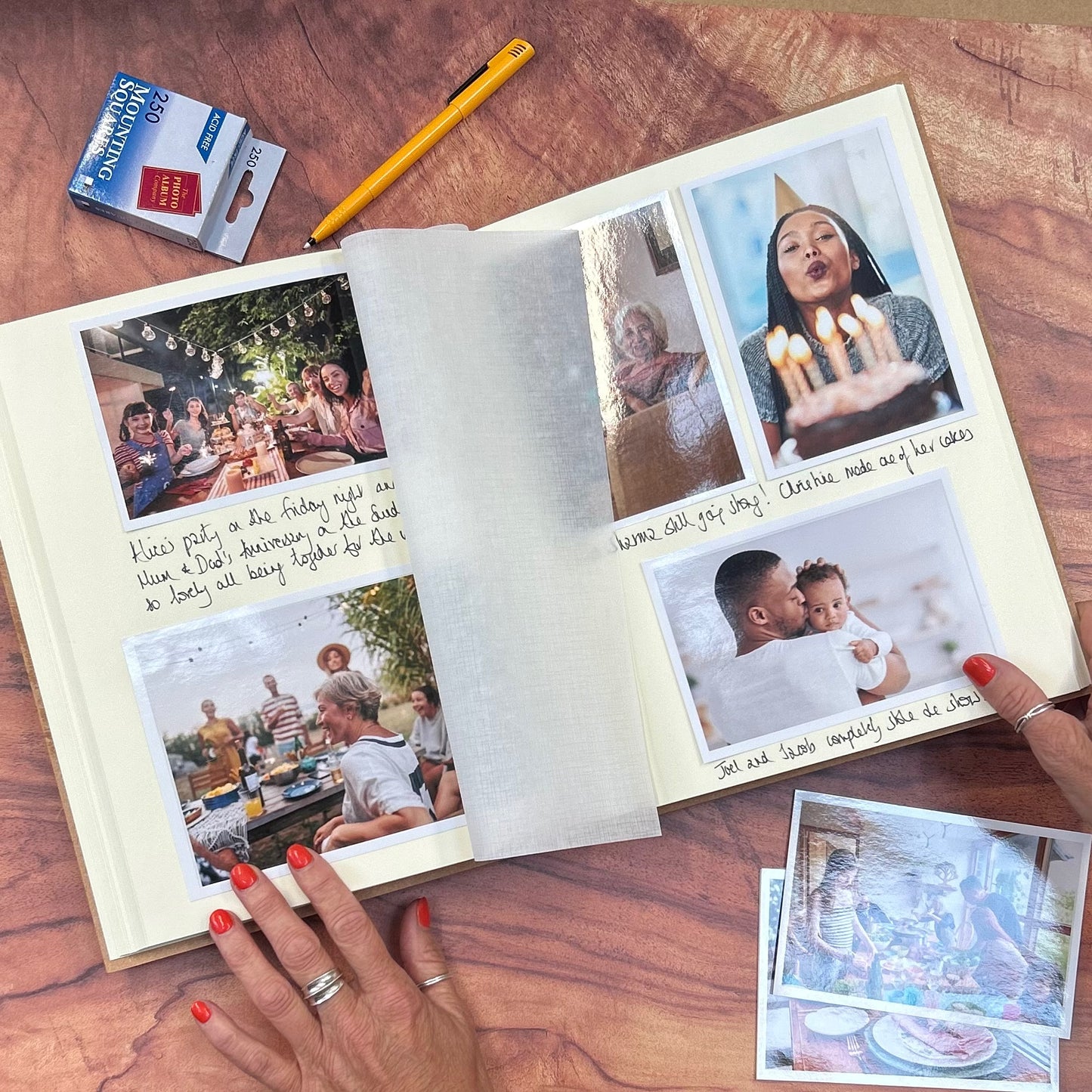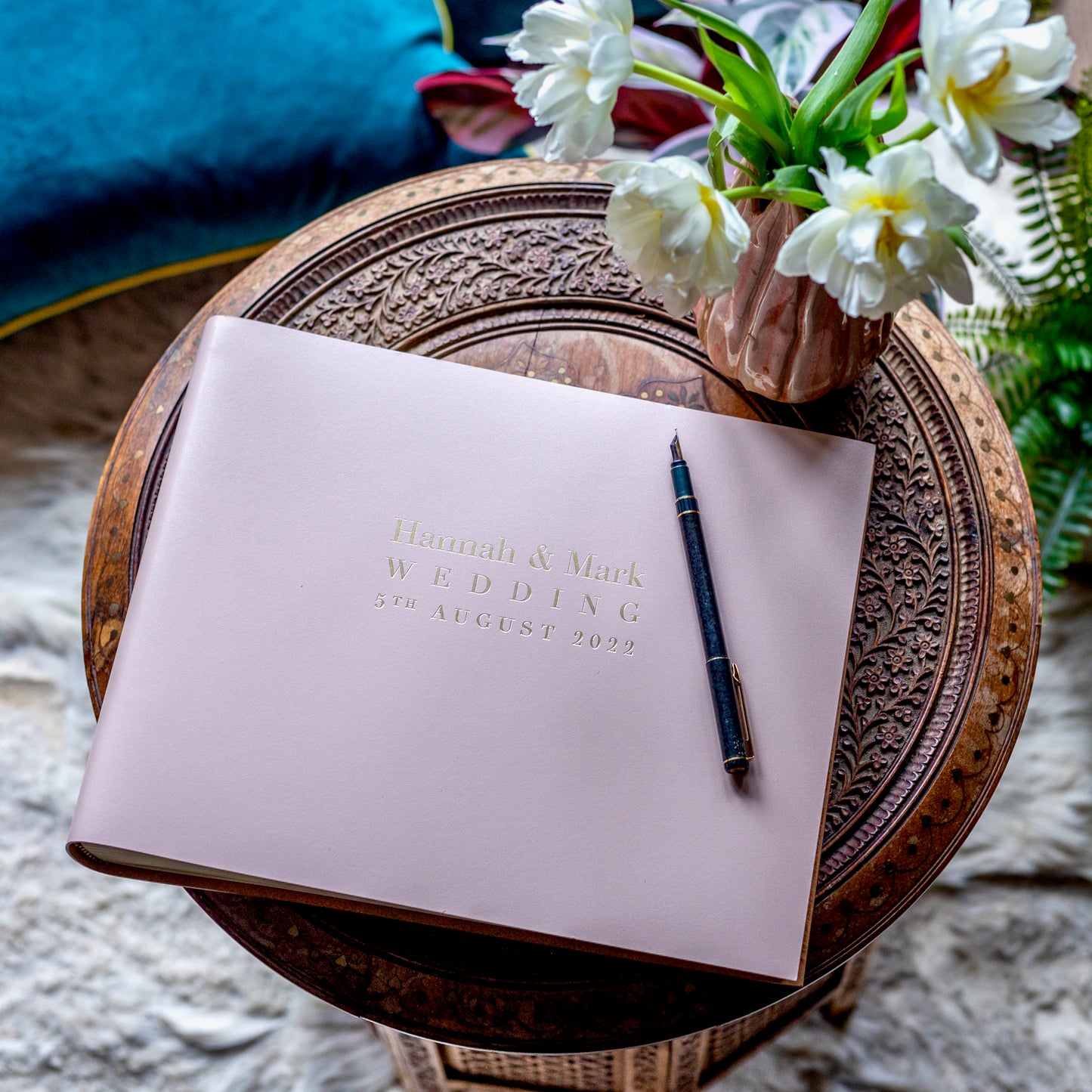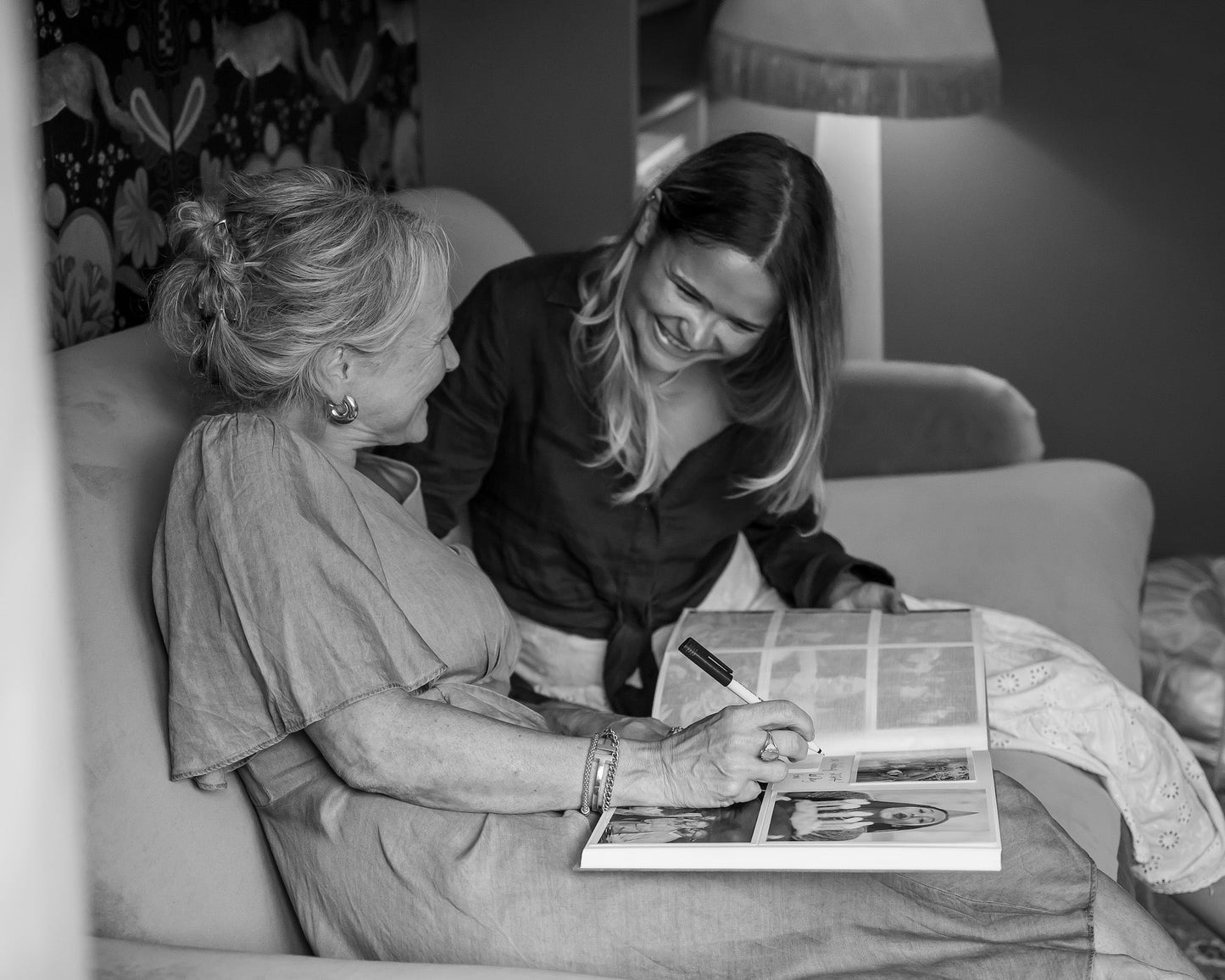
What Is The History of the Family Photo Album?
For many of us, opening a family photo album is a real treat that allows us to momentarily step back in time. The soft rustle of the pages, the smooth finish of the photos and the handwritten captions tell stories of lives lived, milestones celebrated and everyday random moments treasured. The family photo album isn’t just a book of pictures – it’s a way of passing down memories and an object of true beauty in its own right. But where did this tradition actually come from, and how has it changed over the years?
Here, we explore the history of the family photo album: from its Victorian beginnings to the digital age, and consider why, even today, many of us still love the feel of holding and flicking through an old school, traditional photo album.
When Was Photography and the First Photo Album Invented?
Photography as we know it began in the early 19th century. The first widely available photographic process, the daguerreotype, was introduced in 1839 by French scientist and artist, Louis Daguerre. These early photographs were delicate, grainy, blurred images mounted under glass. Families would keep them in protective cases, much like miniature framed portraits.
As photographic technology advanced, especially with the invention of the albumen print in the 1850s, it became possible to produce multiple copies of a photograph. And it was around this time that the first dedicated photo albums were born. They weren’t the books we are used to today, but instead were weighty, hardback, leather-bound volumes designed to hold cabinet cards or cartes de visite (small photographic portraits exchanged among friends and family). Have a look on eBay or Etsy as you can still buy them!
These early albums were often displayed proudly in parlour rooms (the equivalent of a 'front room' which your Nan and Grandad might have had) – a sign of both social status and affection for one’s family. To browse through a Victorian photo album was to see family members dressed in their Sunday best, looking serious (smiling wasn't a thing!) and in very staged scenarios.
 'Portrait of a Mother & Child' by Julia Margaret Cameron
'Portrait of a Mother & Child' by Julia Margaret Cameron
When did Family Photo Albums Become Popular?
As photography became more affordable and accessible in the 19th century, families began to document not just formal portraits but also everyday life. By the late 1800s, portable cameras made it possible for people to take snapshots outside the studio, at picnics, holidays, and outside family gatherings.
Simultaneously, photo albums evolved too. The rigid, ornate Victorian albums gave way to more practical designs with card pages, tissue interleaves, and gilt-edged paper. Families now had somewhere to carefully mount their treasured prints, sometimes with handwritten captions noting dates, places, or sentiments.
These books soon became valuable keepsakes, passed down through generations as irreplaceable heirlooms.
When did Mass Photography and Everyday Albums Arrive?
The invention of Kodak’s Box Brownie in 1900 changed everything. For the first time, ordinary families could afford to own a camera and take snapshots themselves. “You press the button, we do the rest,” Kodak promised, making photography an everyday hobby rather than a luxury.
With this 20th century explosion of casual photography came the golden age of the beloved family photo album. The design of albums became more varied – from simple, cloth-bound books with black pages for mounting prints, to more decorative styles with embossed covers. Many people may also remember albums with sticky adhesive pages (the devil's work as far as we're concerned) or corner mounts which each photo carefully slotted into.
By the 20th century, the photo album was democratic. It was no longer a status symbol but had become an everyday household object. Parents documented their children’s first steps, school holidays, and family pets. Newlyweds compiled their wedding photos. Travellers pasted postcards alongside prints from far-off adventures. The album became a personal archive of life itself, an aide-memoire to the events of one's life.
 The Box Brownie Camera (credit: Jen Theodore)
The Box Brownie Camera (credit: Jen Theodore)
Scrapbooks, Creativity, and the Personal Touch
Alongside the traditional photo album, the 20th century also saw the rise in popularity of scrapbooking. Families began to mix photographs with mementoes: theatre tickets, pressed flowers, newspaper clippings, you name it. Albums became more creative, filled with handwritten notes, decorative borders, and personal flourishes.
This tradition of making albums more personal is something that has carried over to today. A personalised photo album – perhaps with a name embossed on the cover, a special date, or a meaningful colour – feels like a natural continuation of this impulse to make memory-keeping unique and individual.
The Digital Revolution: Are Albums a Thing of the Past?
With the arrival of digital cameras in the late 20th century and smartphones in the early 21st, the way we take and store photos has most certainly changed forever. Millions of photos can now be stored in the cloud, scrolled through on a phone, or shared instantly on social media.
So what does this mean for the treasured family photo album. Why go through the faff of printing out your photos when you can swipe through tens of thousands on your phone?
Are Traditional Photo Albums Back in Style?
In recent years, we've seen a real revival of interest in traditional photo albums. People are realising that while digital is convenient, physical albums have a soul. Photo albums are not just about storage; they’re about storytelling. They’re a way of saying: these are the moments worth remembering, worth printing, worth holding in your hands. And it's most definitely the tactile element that we really love.
Here at BeGolden, we witness this love of the photo album every day. Customers buy personalised photo albums to celebrate a wedding, mark the arrival of a new baby, or create a record of a milestone birthday. They are choosing the mindful, hands-on process of selecting, printing, and arranging photos in an album, seeing it as a joyful pursuit, rather than a chore.
Why does the Family Photo Album Still Matter?
-
Tactile Experience – Turning the pages of an album engages the senses in a way that swiping a screen just can't.
-
Storytelling – A curated photo album tells a coherent story, rather than presenting a random scatter of images.
-
Legacy – Albums are heirlooms. They can be handed down, becoming part of a family history.
-
Mindfulness – Making a photo album encourages us to slow down and reflect, reminisce and revisit.
-
Personal Touch – With a personalised photo album, the object itself becomes meaningful – a gift, a keepsake, a treasure.
Looking Ahead: What's the Future of Family Photo Albums?
We're really confident - and hopeful! - that there's a bright future for the family photo album. Digital tools make it easier than ever to organise and print photos, and the contemporary design of albums like ours appeal to modern aesthetics. At BeGolden, we believe that the best albums are actually a happy mix of both timeless and modern, combining traditional bookbindery skills with up-to-the-minute materials and typefaces.
Final Thoughts
The family photo album and its role in our lives has changed enormously over the last 250 years, evolving from the Victorian era status symbol to the bookshelf mainstay of the 1970s. Now, as people search for greater connections with each other than the virtual world can offer, we believe all the signs are that the photo album is set to become a firm favourite once more. Watch this space!
